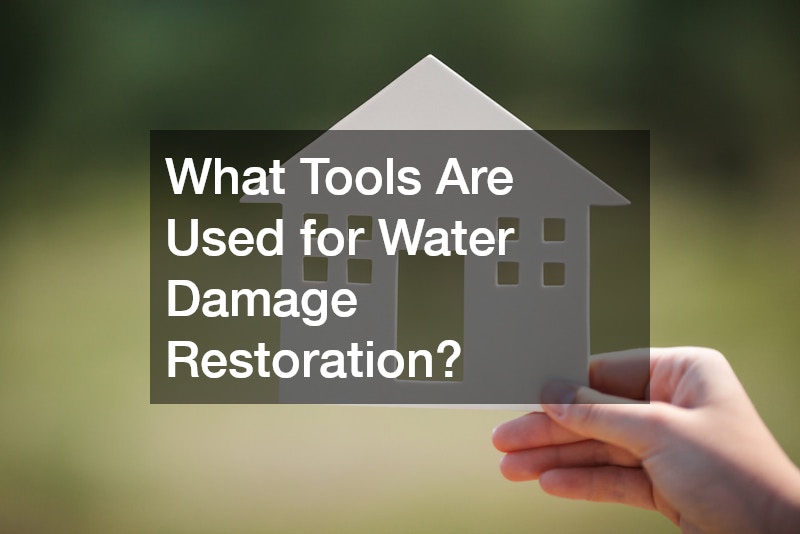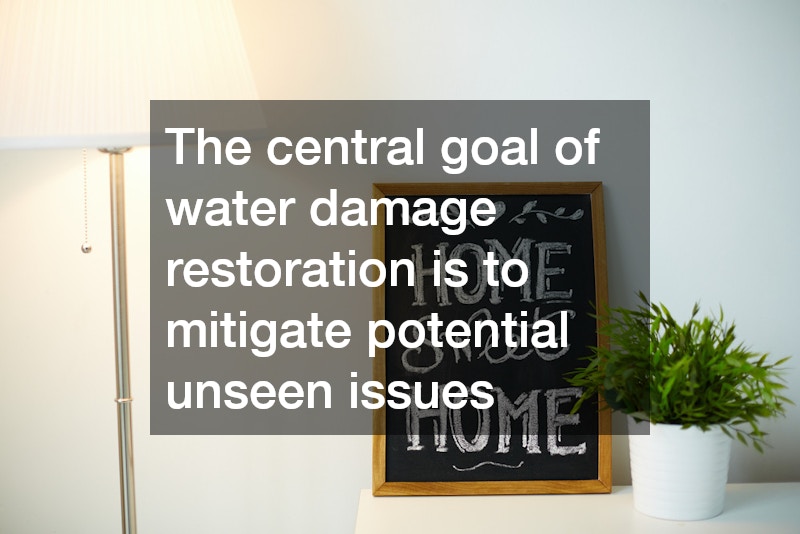

Water damage restoration is a process that involves the removal of excess water, cleaning, and drying of the affected areas to prevent further damage and restore the property to its original condition. This process is crucial following incidents like floods, leaks, or heavy rainstorms, which can cause significant damage to structures and belongings. Professionals in the field use a variety of specialized tools to address water damage efficiently and effectively.
The central goal of water damage restoration is to mitigate potential unseen issues such as mold growth, which can occur in just 24 to 48 hours after water exposure. To achieve optimal results, restoration technicians must act quickly and use appropriate equipment.
This article explores the various tools used in water damage restoration that professionals rely on to tackle these challenges.
Understanding the tools available can help property owners appreciate the complexity of water damage restoration and the necessity of professional intervention. This insight may lead to more informed decisions regarding restoration services and the selection of capable contractors. With the right tools, water damage can be addressed effectively, minimizing long-term damage and restoration costs.
Water Extraction Equipment
Water extraction is a critical first step in the restoration process and involves removing standing water from properties. Technicians use various tools to perform this task, the most common being powerful pumps and water vacuums. Submersible pumps are often employed for removing vast amounts of water efficiently from basements or large areas.
In addition to pumps, wet/dry vacuums play a crucial role in water extraction. They are particularly effective at dealing with smaller areas or less severe water accumulation. These vacuums are designed to handle both wet and dry substances, making them versatile tools in the water damage restoration toolkit.
Removing water quickly is essential in preventing further structural damage and reducing the risk of mold development. The efficacy of the extraction process heavily relies on the equipment used, underscoring the importance of employing the right tools. When water is efficiently extracted, it sets the restoration project on a solid foundation for subsequent cleaning and drying phases.
Drying and Dehumidification Tools
After excess water removal, drying and dehumidification are necessary steps to ensure the complete restoration of affected areas. One of the primary devices used in this phase is the air mover, which promotes airflow and accelerates the drying process. These powerful fans help evaporate moisture from walls, floors, and furniture.
Dehumidifiers are another essential tool in the drying process. They work by extracting moisture from the air, reducing humidity levels, and limiting the potential for mold growth. Dehumidifiers come in various sizes and capacities, allowing technicians to choose the most effective model based on the size of the affected area.
The combination of air movers and dehumidifiers provides an effective method for restoring indoor environments to their pre-damage condition. By reducing moisture content to acceptable levels, restoration professionals can prevent long-term structural issues and health risks associated with high humidity, such as mold and mildew.
Cleaning and Sanitizing Equipment
Once drying is complete, the next phase involves cleaning and sanitizing to ensure the property is safe and habitable. Restoration experts use a range of cleaning solutions and equipment to clean surfaces affected by water damage. Antimicrobial treatments are frequently applied to prevent mold and bacteria growth, ensuring the area is sanitary.
In addition to cleaning agents, professionals employ specialized tools such as carpet cleaning machines and pressure washers. Carpet cleaning machines are used to deep clean carpets and fabrics that may have absorbed water, removing dirt and contaminants. Pressure washers can be used on tougher surfaces like driveways and walls to eliminate grime and bacteria.
Ensuring proper sanitization is a vital step in the restoration process as it protects occupants from potential health hazards. With thorough cleaning, any contaminants resulting from standing water or sewage backups can be safely removed. This attention to detail during the restoration process preserves the integrity of the property and promotes a healthy living environment.
Water damage restoration is a complex process that requires a combination of advanced equipment and skilled techniques. The use of specialized tools for water extraction, drying, dehumidification, cleaning, and sanitizing plays a crucial role in the effectiveness of restoration efforts. Each tool serves a specific purpose to ensure the property is returned to its pre-damage state.
Understanding the role of these tools underscores the importance of hiring experienced professionals to handle water damage restoration. By leveraging the appropriate equipment, restoration experts can minimize further damage, reduce health risks, and restore affected areas efficiently. This knowledge empowers property owners to make informed decisions and prioritize professional interventions.
In conclusion, water damage restoration is integral in safeguarding properties and occupant health after water-related incidents. The use of professional-grade tools and techniques ensures a thorough and effective restoration process. As a result, properties can be returned to safe, livable conditions rapidly and efficiently, thanks to the expertise and equipment of restoration professionals.




